Supermen on the assembly line: how we made an exoskeleton for teachers
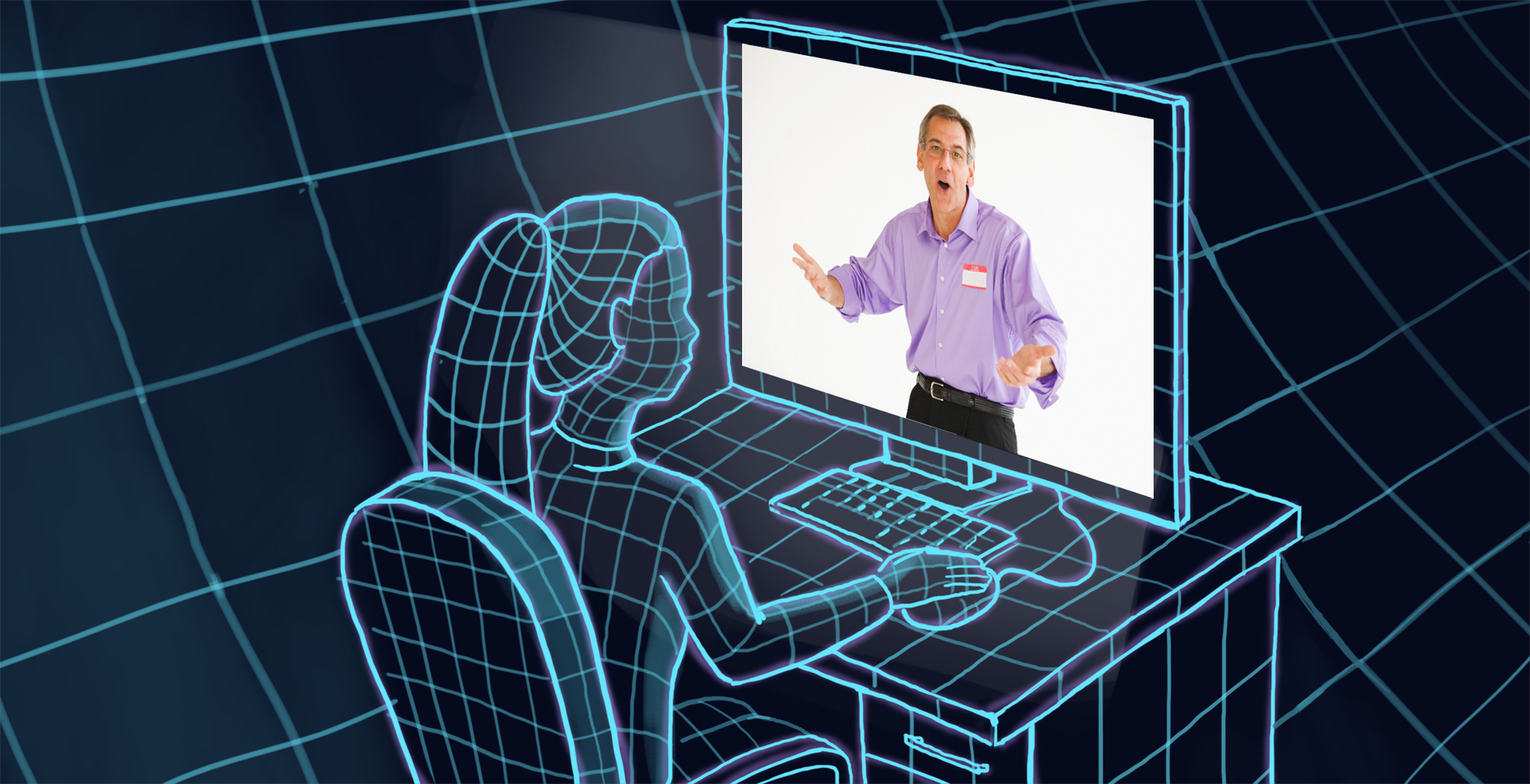
When it comes to online education, new forms of interaction come to replace direct teacher-student contact. What are the advantages of this interaction and how we can make it more effective with the help of new technologies, we will tell in this article.
Interface
All human communication, including education, consists of interfaces: we are not able to transfer information directly to each other in the brain. It is necessary to encode this information with words and transmit it with sound waves or graphic symbols. Of course, this process cannot be without loss, but there is no other way to transfer information between people.
In educational processes, many interfaces are used, including those with feedback. From the effectiveness of these interfaces depends on the effectiveness of training. In the classical form of full-time education one of the main interfaces is a textbook. It contains exercises, the teacher can instruct the student to perform them and, observing the process, draw conclusions about the degree of success of the training (feedback). With such a full-time form of communication between a teacher and a student, informational losses are minimized: the teacher knows for sure that the student performs exactly the exercise that was given, has the ability to correct and explain errors on the fly, to control the entire process.
')
In the extramural forms of education, to which, for example, the teaching of language via Skype, many familiar connections fail or slow down. The teacher does not see what the student is doing, can not show him the necessary exercise in the textbook, can not always correct the error in the written task in a timely manner. This leads to losses in the information flow between the teacher and the student. The more complex the educational process, the greater the number of problems at first glance associated with these losses.
With all the organizational advantages of distance education (no need to go anywhere, no one should be allowed to go home, lessons can be held at any time, day or night, etc.), such interface disadvantages inevitably lead to a decrease in the quality and effectiveness of training.
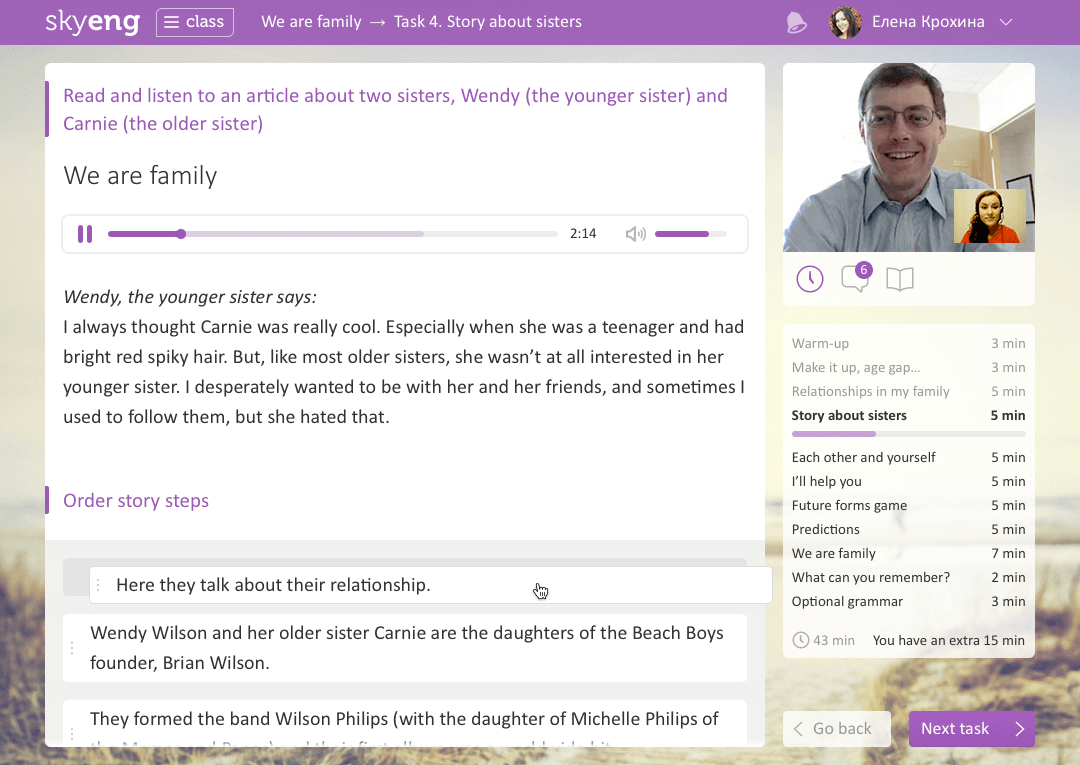
Since the creation of the Skyeng school, we have been working on our own platform, whose task is to minimize the distance, while at the same time increasing the efficiency of the educational process by introducing tools that are inaccessible for full-time study. We are developing our own platform Vimbox, which can benefit anyone.
When developing our platform, we set ourselves two tasks:
1. create a distance learning interface with a minimum amount of information loss;
2. add unique opportunities that are absent in full-time education, increasing the effectiveness of training.
Minimization of losses
Obviously, the main source of information losses in distance learning is in fact the distance between the teacher and the student. It must be reduced to a minimum.
In a real class, the student and the teacher see the same textbook in front of them. In our case, before them is the same slide of our virtual class. The teacher sees all the actions of the student: how he performs the exercises, what answers he writes down in the tasks, what words he adds to the personal dictionary, which is integrated with the mobile application for learning words. The teacher at any time in real time can correct the student's answer, help him complete tasks, drag the correct answer to the right part of the exercise, make explanations during teamwork. The teacher and the student lead joint notes in the lesson and interact with the exercises in real time. In the near future, we also want to synchronize screen scrolling so that the teacher can see where his student is currently looking.
Also, on the platform, the viewing of audio and video files is synchronized: both participants in the educational process can click on the play button, they will hear and see the same thing. If somewhere in the middle of an audio exercise a student has a question - he can click on a pause and ask him; the teacher knows exactly at what point this question arose.
All this not only reduced the distance between the teacher and the student, but also helped the teacher to get more information about how the student interacts with the tasks, what causes him the greatest difficulties and what points need to be clarified - all this is impossible when conducting offline classes in a group of students.
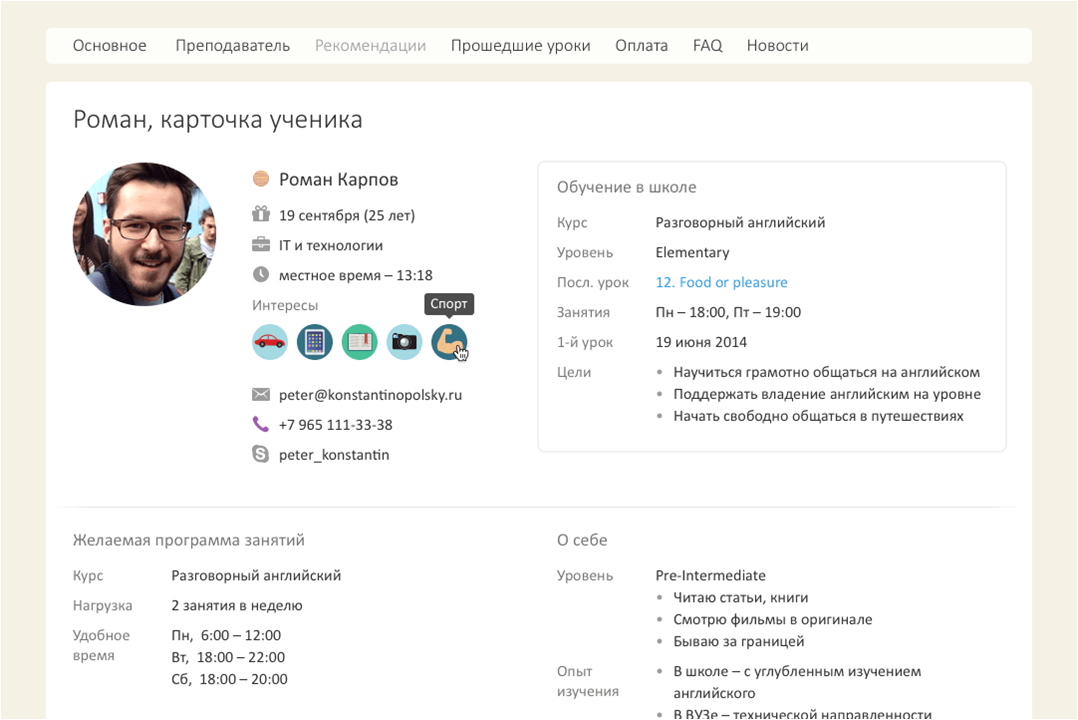
All the expertise about the knowledge of the student is collected not only by the teacher, but also by the platform itself. We always know how the student interacted with the material, what words he learned, what grammar topics he passed. The virtual platform helps us to create a personal learning history, a kind of “history” in the same way as a card is conducted in the clinic. Based on the data obtained, we will be able to know the complete information about the level of knowledge of the English student and suggest his personal texts, topics for study, films for viewing in English and music for listening. Personalization of content is one of the tasks that we want to solve in the future, creating exactly the exercises that this student needs.
New opportunities
In science fiction novels, one can often come across the idea of an “exoskeleton” - the mechanical improvement of the human body, which becomes stronger, stronger and faster. From fiction, exoskeletons gradually come to real life: they are used, for example, when working at great depths and in space. Transferring the training to online, we create an “information exoskeleton”, which provides new, still inaccessible opportunities for both the student and the teacher.

For a student, these improvements - from the banal economy of effort and time (no need to open the textbook, look for the page you need, write something to yourself in a notebook) to useful auxiliary functions - for example, the vocabulary built into the lessons, add an unfamiliar word to the dictionary with one click, the ability to repeat the material at any convenient time and memorize the words traversed using a convenient application on your smartphone.

For the teacher, this, along with the facilities described above, is the most complete “dossier” for each student. In today's world, few people can afford a personal teacher in full time. The teacher cannot physically remember everything about each of his students. The “information exoskeleton” comes to the rescue: in five minutes of preparation for the lesson, the teacher can not only remember which paragraph of the textbook stopped studying, but also get data on all the difficulties that had to be faced, according to the current real needs of the student, he paid to memorizing words, by the state of memorization of these words, by the level of his current vocabulary (“heat map”), etc. In addition, each exercise contains "teacher's notes" (teacher's notes), which, if desired, can be shown to the student. In full-time study, these notes are a separate book that helps the teacher build a lesson.
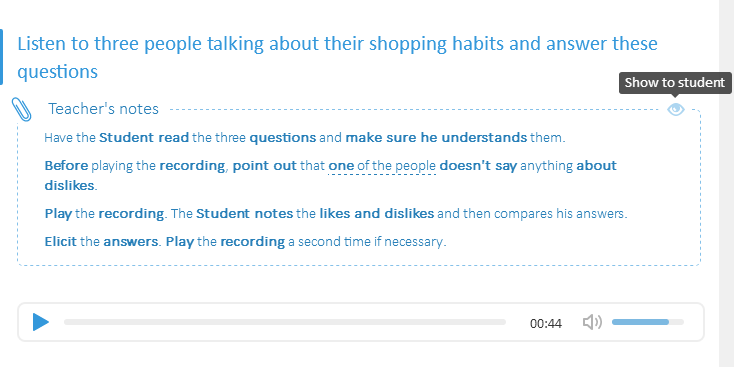
Now we are collecting all the statistics on how the learning process is going on and we are doing experiments, improving teaching materials depending on the needs of the students. We can measure a lot of parameters: how much the student spoke and how much the teacher, what language they spoke, how much time the student spent on the exercise and what answers he tried to enter.
For example, in some exercises the percentage of correct answers reaches 99%: it can be assumed that, from the point of view of methodology, these exercises are too light and do not carry pedagogical value; on the contrary, exercises in which a large percentage of incorrect answers are most likely incomprehensible to the student, they must be reworked.

The statistics of specific exercises can be obtained even directly from the slide:

The student can mark each slide of the lesson or homework as “liked” or “not liked”. Methodists see this statistics as well as the average time for students to go through the slide and a few recent records of such passes.

Statistics of lessons and specific exercises, marked by the students as “liked” or “disliked”. Color corresponds to the overall assessment of the lesson.
Of course, there are statistics on the lessons learned - who, when, with whom, what level, what course, what products were used, how quickly the slides went. In a convenient form, these statistics are available through the “Lesson Filter” tool, and more detailed technical data is stored on the statistics server.
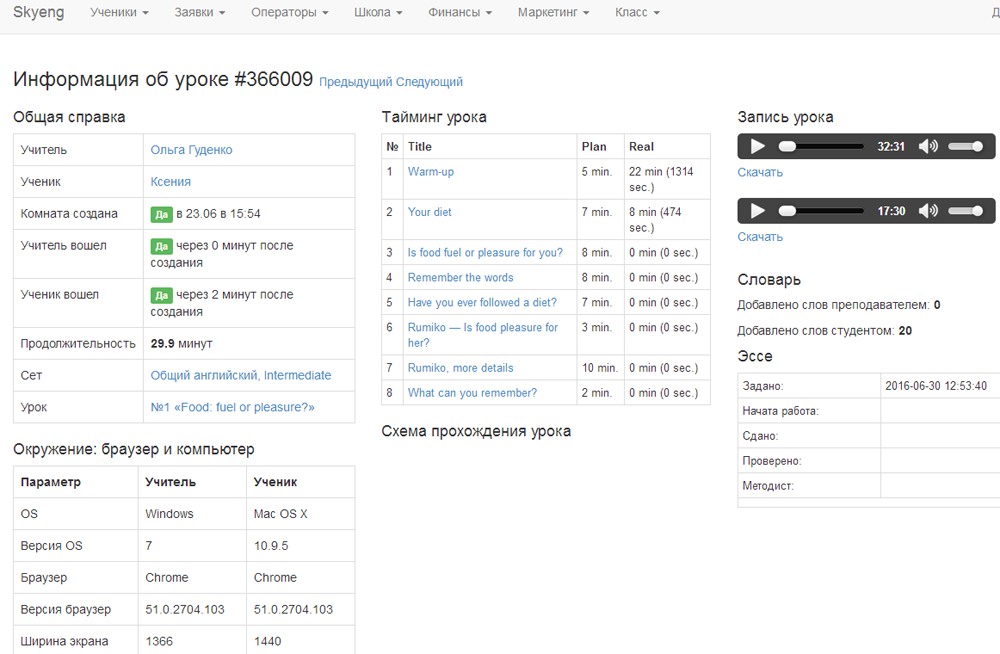
In addition, assessments are collected that students put teachers after class. A generalized schedule allows you to see how specific teachers or groups of teachers influence student assessments. Special attention, of course, is paid to bad grades, they can be used to identify "unloved" teachers or "unsuccessful unions", this is a topic for discussion at the teachers' council. Here is an example of the temporal distribution of the total grade across the school:

Collected statistics allow us to develop new tools to improve the "performance" of the "exoskeleton". Thus, we do not just compensate for the disadvantages of learning online, we turn them into advantages, creating additional value using the unique capabilities of information technology.
You can try our platform here . Open the site from the teacher’s computer and send the generated link to the student.
And we are looking for a cool full-stack developer to program this system: moikrug.ru/vacancies/1000027298
Source: https://habr.com/ru/post/304554/
All Articles